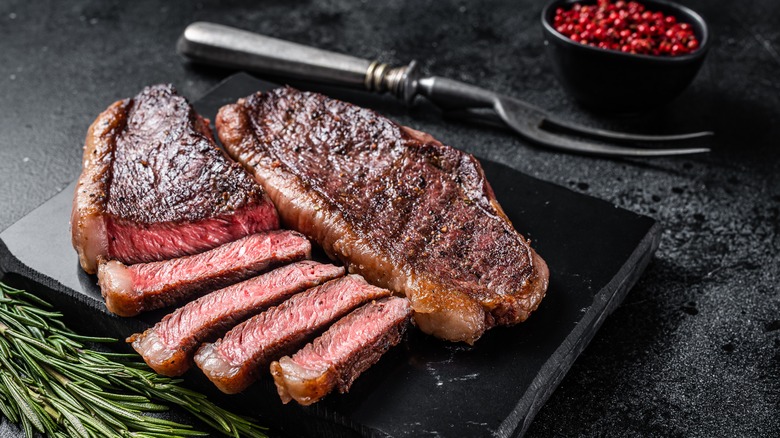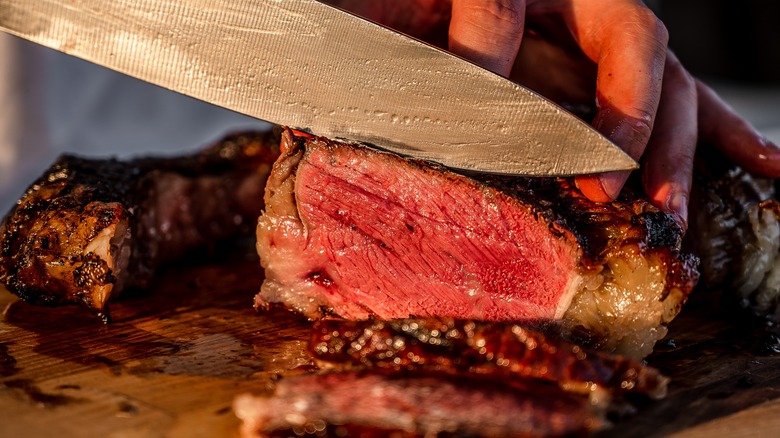The Correct Way To Effortlessly Cut Sirloin Steak
Many people love the sumptuous taste of a good cut of steak, but few know the story of how this delicious meat became such a dominant part of our diet. Its popularity is partly due to its nutritional benefits and versatility, but more likely because of its delicious flavor. The word steak has its roots in the Norse term, steik, used to describe a thick piece of meat taken from an animal's hindquarters (Kitchen Substitute). However, another version of its origin dates back to the Medici era, when they ate large portions of steak during celebrations dedicated to Saint Lorenzo, and the Italians later shortened the word "bistecca' (beefsteak) to "steik" to help the English knights, who joined in the feasts, better pronounce the term.
Sirloin beef is one of the most popular, flavorful, and economical cuts of premium steak. In addition to knowing the best methods of cooking or discovering your favorite grilling sauces, it is equally valuable to learn how to properly cut sirloin to best preserve its tenderness. In the words of American author Jarod Kintz: "True love is rare like a good steak. Help me cut it up."
Going against the grain
Steaks sold in markets are either tough cuts like flank steaks, or premium cuts like sirloin – the least expensive of the tender ones (per LiveStrong). Sirloin is a large square-shaped cut of beef, but Livestrong indicates that stores offer it already cut into steaks, or sold as a roast, which consumers can cut into pieces themselves. According to The Spruce Eats, cutting against the grain — meaning, slicing it perpendicular to the long parallel muscle fibers — results in the most tender meat because the fibrous muscles in each steak are shorter, making it less work to chew. As The Kitchn admits, it is often hard to identify the grain, so look closely for the thin white lines on the meat – harder to see in sirloin and other premium cuts. Steaks can be almost inedible if cut in the same direction as the grain because the muscle fibers will remain intact (via Just Cook).
Livestrong advises slicing from the sides, where the muscle tissues look like the round end of a drinking straw, as opposed to the parallel lines that look more like the length of the straw. When cutting from a whole sirloin, you get very large individual steaks, so use a long knife to do it evenly. Cut steaks between ¾ to 1 inch in thickness, or if you want them bigger, cut to twice the width, then cut each thicker one down the middle and butterfly it to make one portion (per Livestrong).

